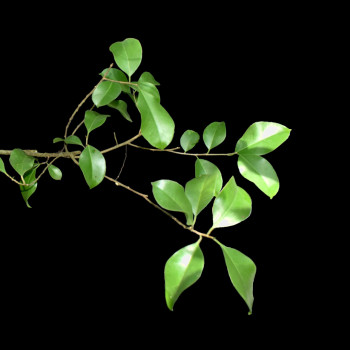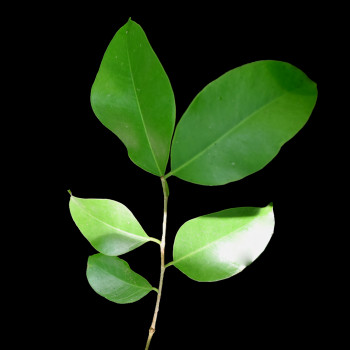Ithi

Scientific Name :
Ficus tinctoria G. Forst. ssp. parasitica
Synonym(s) :
Local/Common name(s) :
Ithi
Family :
Moraceae
Habit :
Tree
Flowering/Fruiting Time :
March-April
Habitat :
Moist deciduous and semi-evergreen forests, also in the plains
Endemic :
No
Status (IUCN) :
Least concern (LC)
Distribution :
Indo-Malesia
Nativity :
Indigenous
Uses :
Description (Morphology) :
Small trees, often epiphytic with interlacing aerial roots; bark grey; blaze yellow; exudation milky; branchlets glabrous. Leaves simple, alternate; stipules lateral, to 1.5 cm, lanceolate; petiole 5-10 mm, slender, grooved above, scabrous; lamina 5-12 x 2-5.5 cm, elliptic-ovate or rhomboid, gibbous on one side, base acute or attenuate, apex acute or acuminate, margin entire, gibbous on one side, more or less scabrous, hispid above, coriaceous; 3-ribbed from base, lateral nerves 3-7 pairs, pinnate, prominent beneath, intercostae reticulate, prominent. Flowers unisexual; inflorescence a syconia, dioecious, axillary, usually paired or clustered, rarely solitary, globose; peduncle 1.5-10 mm, slender, scabrous, body scabrous; basal bracts 3, small, closed by several small apical scales; internal bristles minute, abundant; flowers of 4 kinds, male and gall flowers in same receptacle; female in separate; male flowers ostiolar, in 1-2 rows, sessile or pedicellate, oblong; tepals 3-6, free, 0.7-1 mm, white, scabrous, puberulous; stamen 1; filament 0.6 mm long; anther oblong, parallel, mucronate; pistillode present; female flowers sessile; tepals 4, oblong, free, white, scabrous, puberulous; ovary superior, sessile, 1 x 0.8 mm, obovoid-globose, white; style 2 mm, lateral; gall flowers sessile or pedicellate; tepals as in male flowers; ovary 0.5 mm across, globose or 2-lobed; style lateral, short tapering, tip thickened, brown. Syconium yellow when ripe; peduncle to 1.5 cm long; achene 1.5 x 1.2 mm, keeled or not.



